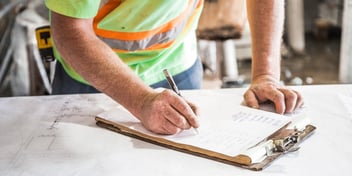First of all, what is a safety culture? In short, a safety culture is the company’s attitudes, values, and commitment to all-around workplace safety, and it is much more than simply following regulations and avoiding fines. If you want to read more about what is involved in a safety culture, check out this great blog post that explains all about it.
Once you’ve learned all about what a safety culture is, you might be wondering if it sounds right for your workplace. We’re here to tell you that it absolutely is. Every workplace should have a safety culture because there aren’t really any drawbacks to it, only benefits.
Take a look at these four reasons why you need to create a safety culture in your workplace immediately:
1. Reactive Safety Training Is Not Enough
Hindsight is 20/20, but that doesn’t necessarily create a safer environment. Don’t make anyone learn the hard way—that is, waiting until a serious accident occurs before important safety information is enforced. Maintaining a quality safety culture can help to prevent accidents, big and small, so that employees are kept safe and focused on the job.
2. Accidents Decrease While Productivity Increases
In an environment with a strong safety culture we tend to see fewer accidents because of fewer risky behaviors, and productivity tends to increase because of employees’ engagement and commitment on the job. Who wouldn’t want a safer, more productive workplace?
3. Communication And Teamwork Improve
You can’t maintain a safety culture without maintaining effective communication and solid teamwork. These components play a major role in a good safety culture, so it stands to reason that all-around communication and teamwork will see some major improvements in your workplace when you create a safety culture.
4. Incident Numbers Can Be Misleading
The problem with using incident numbers to measure safety management success is that the numbers can fluctuate greatly by chance. Workers in unsafe environments can still avoid accidents by luck or even fail to report incidents that do occur.
You should still track incidents, but proactive safety management should also be measured. What are employees and managers doing on a regular basis to prevent accidents? This can be another useful number to measure the success of your safety culture.
Are you convinced that you need to create a safety culture in your workplace? Check out our blog post on how to create a safety culture to get some useful information for getting started.






Leave a Comment